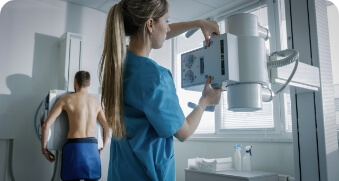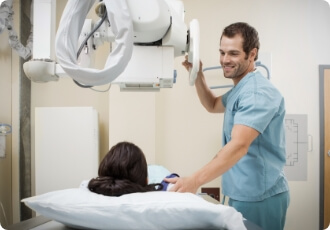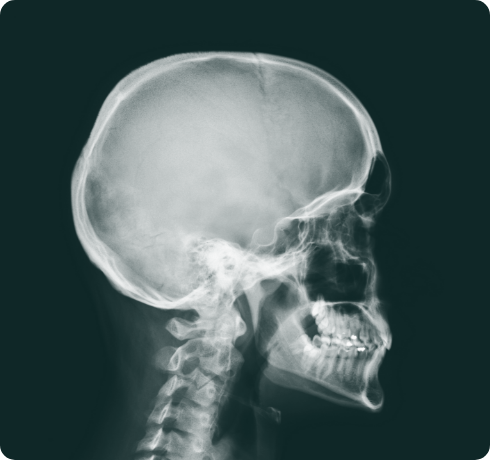
What are the benefits of VR for training in medical imaging?

Radiographers need considerable technological and scientific expertise to carry out their roles. Among a host of other things, they need to know how to produce high quality diagnostic images, how best to position their patients, and how to responsibly and safely deliver ionising radiation.
Such skills have traditionally been acquired through clinical placements and clinical skills labs, both of which are hard to comeby and costly. Often students are left to role-play more complex projections and manipulations, without being able to take any images to gauge how well they are doing. Image acquisition is central to learning and reflective practice as it allows students to identify and correct errors in patient positioning, exposure, beam centring, and the like.
Virtual reality medical radiography learning environments offer a host of benefits to trainee health professionals that are simply not available through traditional training methods.
Visualisation is Powerful, VR Even More So
It’s a well established fact that a strong link exists between mentally visualising an outcome and actually achieving the outcome in life. Virtual reality training leverages this principle with the added advantage that the user no longer has to imagine their success, but can instead experience that success in a highly immersive simulated environment. This makes it even easier for learners to translate their skills into the real world.
Mobile Training Apps Extend Reach
Mobile virtual reality training programs are changing the face of healthcare training by allowing students and practitioners to practice a wide range of radiography procedures, from basic techniques to more intricate procedures carried out during surgery, without having to set foot into the clinic or operating theatre.
These VR apps allow students to obtain hands-on experience and hone their skills from almost anywhere using only a laptop.
This means that practitioners and students in remote areas are able to receive practical experiential training, maintain their skills, practice for accreditation and compliance, and stay up to date with new and emerging techniques in ways that were not previously available to them without long journeys and considerable expense.
Cost-effective, Risk-free Skills Practice
Learning any new skill is a matter of trial and error, and perfecting that skill requires dedicated and consistent practice. Real world practical experience is often limited by geographical, patient availability, or cost-related factors, as well as the considerable risks for real patients when receiving treatment from trainees. The clinical setting also does not offer any room for error, especially in settings where mistakes may result in harm to the patient.
Virtual reality simulated training environments, on the other hand, provide realistic clinical situations, complete with equipment, patients, and health professional avatars that respond in realistic ways. This allows students to use mistakes as tools for learning without the stress and high stakes of the real life clinical setting.
Preparing Students for the Unexpected
VR training programs are highly customisable, allowing trainers to set them up in ways that throw the learner into unexpected situations and help them to learn how to respond correctly to emergencies.
In traditional settings, it is simply not possible (or ethical) to deliberately create dire circumstances for the sake of training. However, in the virtual setting, these uncommon scenarios are easily created and can be repeated as often as required for the student to learn the necessary skills.
VR therefore provides excellent training for real world clinical settings where almost anything can happen and radiologists need to adapt to changing circumstances at a moment’s notice.
VR Works for Visual, Experiential, and Auditory Learners
Humans learn in three primary ways, by seeing, hearing and doing. Some learners are far more receptive to information via one of these learning modes than the others. So, a person may be a predominantly visual learner, or experiential learner or auditory learner. Virtual reality training technology caters for all three learning modes, allowing trainees to learn effectively no matter which mode of learning they favour.
Realistic Responses Provide Vital Feedback
When students practice using medical imaging virtual reality training systems, they benefit by receiving realistic responses from the virtual patients and equipment in real time as they work. This allows them to take corrective action and improves their technique.
Self-paced learning
One of the big things with modern learning that Medspace addresses well is self-paced learning. Students can repeat procedures and techniques at their own pace.
Objective Assessment of Skill Competence
Classroom training sessions can be tracked and reviewed by the supervisor at a time that suits them. Supervisors can see how well students are progressing with their training and step in with extra advice and guidance as required.
A More Realistic Experience
VR medical imaging training software allows students to familiarise themselves with, and better understand, the VR medical imaging training software allows students to familiarise themselves with, and better understand, the equipment they will encounter in a real life clinic or operating theatre. They learn more than just valuable skills, they also learn the constraints of operating equipment in clinical settings.
VR Makes Learning Fun
Ultimately, students are motivated by the idea of one day practicing Radiography in a clinical or hospital setting. VR training programs leverage this motivation by placing them in their desired situation while they learn. The fact that this is a safe environment in which mistakes are allowed and the focus is on developing skills, makes the learning process much less stressful and loads more fun.
Enjoyment of the training method increases the likelihood that they will continue to apply themselves to learning, resulting in better skills acquisition and better outcomes.
VR Builds Competence in Students
When faced with real life situations, students who have had the benefit of VR medical imaging training demonstrate more competence in their abilities and radiographic techniques than those who have been trained by traditional means.
VR as a Supplementary Training Tool
From the above it’s clear that VR training holds many benefits for Medical Imaging students. It is important to note however, that VR is valuable as a supplement to, rather than as a replacement for, existing clinical skills labs and clinical placements.
Rapidly Advancing Technology
With current VR systems providing so many opportunities for trainee medical professionals, new developments in this rapidly advancing technology are sure to bring even greater benefits.
If you would like to find out more about Medical Imaging Virtual Reality Environments, please reach out to our friendly team today.
Check Out More Articles

Let use medspace.VR give you that advantage
Whether you are an institution or a student, medspace.VR is designed to help. Begin the process today.
Enquire Now

